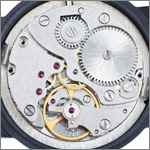
When daylight savings time ends this Sunday, we’ll need to adjust every clock in our homes, cars and offices. Our internal clocks will need to adjust too.
The body has a master clock in the brain, as well as others in nearly every tissue and organ. These biological clocks drive circadian rhythms, the physical, mental and behavioral changes we experience on a roughly 24-hour cycle. Your hunger in the morning and sleepiness at night, for example, are caused partly by clock gears in motion. These gears can get out of synch with the day-night cycle when the time changes or when we travel through time zones.
We still have a lot to learn about the molecular basis of the clock gears, says NIH’s Michael Sesma, who has followed circadian rhythms research for more than 15 years. “Scientists are trying to figure out which genes control the gears and which genes are controlled by them,” he says. Answering this question could help researchers develop more targeted therapies for clock-related health conditions like sleep disorders and possibly even metabolic conditions like diabetes and obesity.
Check out our coverage of circadian rhythms research to find out what scientists have learned about biological clocks:
- Scientists Shine Light on What Triggers REM Sleep
- An RNA Molecule That Cues the Internal Clock
- Resetting Our Clocks: New Details About How the Body Tells Time
- Stop the (Biological) Clock
- Tick Tock: New Clues About Biological Clocks and Health
- How the Body Keeps Track of Time—Or Doesn’t
- 4 Timely Facts About Our Biological Clocks
- Circadian Rhythms Fact Sheet

